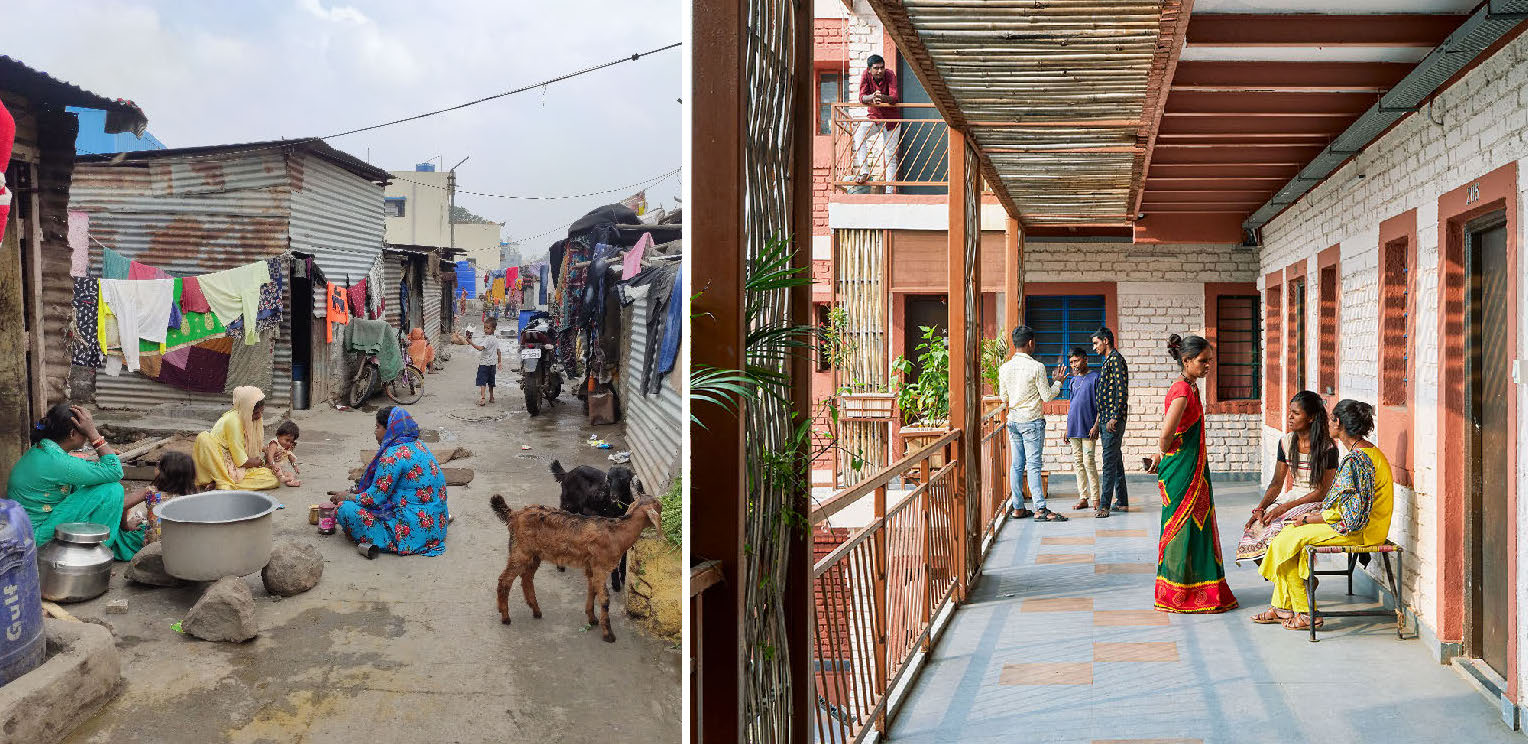Rebuilding Hope: How Climate-Resilient Communities Are Transforming India’s Slums
Organization: Community Design Agency
2024 LOCAL ADAPTATION CHAMPIONS AWARD NOMINEE
India’s urban poor are at the frontlines of the climate crisis, living in inadequate and unsafe housing that makes them especially vulnerable to extreme weather conditions. In places like the Sanjaynagar informal settlement in Ahmednagar, Maharashtra—one of the hottest and most densely populated regions of India—residents face daily hardships exacerbated by rising temperatures. As temperatures soar and resources dwindle, the urgency for climate-resilient housing solutions has never been greater.
A Community-Driven Solution
Enter the Community Design Agency (CDA), a Mumbai-based social design enterprise led by Sandha Naidu Janardhan. Working with residents, CDA is reimagining slum neighborhoods into climate-resilient, affordable, and well-designed living spaces. Their pilot project in Sanjaynagar is not only setting new benchmarks in sustainable housing but is also empowering local communities to take control of their future.
“We believe that the communities themselves are best placed to understand and respond to their needs,” explains Janardhan, founder and managing director of CDA. “Our role is to facilitate that process, making sure the solutions are designed from the ground up, driven by the very people who will benefit from them.”
At the heart of the project is a truly participatory process where residents have a say in everything—from how their homes are designed to how funds are managed. Local governance structures, including neighborhood slum committees and housing cooperatives, ensure transparency and accountability while empowering residents to shape their own environment.
Residents engaging in a participatory design process
A Blueprint for Sustainable Change
Since 2016, the Sanjaynagar pilot has transformed the lives of over 1,000 people. The first of eight planned climate-resilient buildings was completed in 2022, housing 33 families. These new homes are designed to reduce indoor temperatures by 8-10°F, a crucial adaptation for a region plagued by extreme heat. With solar power, rainwater harvesting, and open social spaces like rooftop gardens and community centers, these buildings foster not just environmental sustainability but also social cohesion.

The first building by CDA
“Residents decided that they didn’t want to be isolated in tall vertical buildings,” says Janardhan. “They wanted structures that allow them to maintain their social networks and community bonds, which are essential for resilience.”
The impact of the pilot goes beyond housing. Women, who make up nearly 50% of the new homeowners, are at the forefront of decision-making. Young leaders, especially women, have emerged from within the community, advocating for better living conditions and financial inclusion. With designated spaces for children to study and play, as well as job training programs for youth, the community is witnessing positive changes in health, education, and social well-being.

Before and after of social spaces in the neighborhood
Scaling Up for National Impact
The success of the Sanjaynagar pilot is just the beginning. CDA aims to scale its climate-resilient housing model to ten slum neighborhoods across India’s tier 2 and tier 3 cities, benefiting at least 10,000 people directly and millions indirectly. The project is a testbed for innovations that will feed into India’s national Housing for All policy, influencing how affordable housing is delivered to the country’s most vulnerable populations.
With its blended finance model—combining resident contributions, government funds, and philanthropic capital—the project is financially sustainable, ensuring that communities can thrive long-term. As CDA collaborates with local authorities, research institutions, and climate adaptation experts, their vision is clear: to empower marginalized communities to adapt to the climate crisis with dignity and resilience.
“We are creating not just houses, but thriving, empowered communities that are equipped to face the challenges of tomorrow,” Janardhan concludes. “And if it can work here, it can work anywhere.”